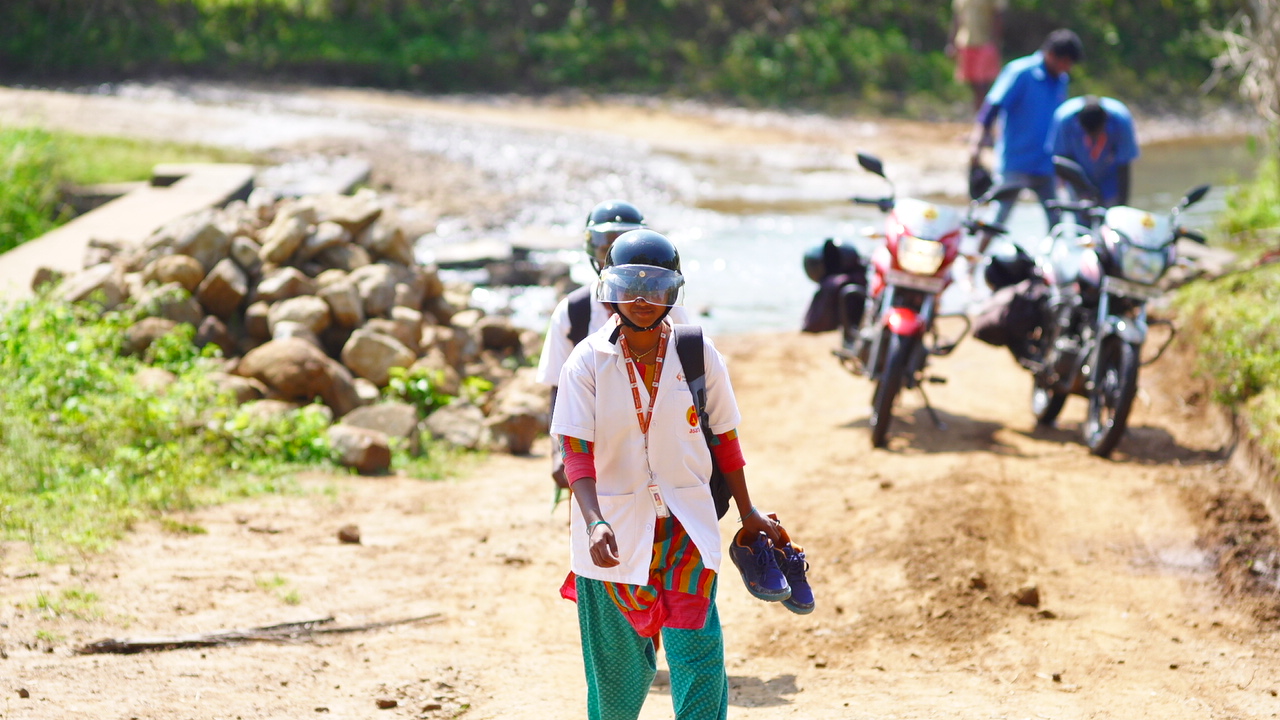You would have heard this philosophical statement – ‘Life and death are not in our hands’. However, I’d like to point out that the ability to access good medical facilities is.
Meet Pramila, an Auxiliary Nurse Midwife (ANM) in the Araku Valley district of Vishakhapatnam. Her day begins at 8 am when she gets into a jeep to travel 13 kms on a road that is almost non-existent. She then hops on a motorbike for another 12 kms, which is driven by a man other than her husband (from where she comes, this is a big deal). It doesn’t end there; she then has to hike another 13 kms to reach her destination.
She then starts her work by meeting the women in the village.
She has not only helped many women get the much-needed medical help but has also saved many lives. Her steadfastness saved a mother from dreadful and fatal delivery complications.

She is revered at her workplace.
Pramila is one of the nurses trained by Piramal Swasthya, a unit of the Piramal Foundation. Started in 2011, project ‘ASARA’ focused on the tribal populations of Araku Valley in Andhra Pradesh, covering the 45,000-plus population in 181 habitations.
While working here, they have been documenting the change in maternal mortality rates since their intervention. By training women like Pramila, they are scripting change for many women in the area.
In an exclusive interview with Vishal Phanse, CEO, Piramal Swasthya, we understand the challenges of working with the locals, their success story, and their vision for the future.
Challenges
One of the biggest challenges that most organisations face is understanding the local community. For ASARA, the challenges were no different. Vishal says, “One of the challenges was understanding the local community, and it took us a good five years to get a sense of that.”
He continues, “As a Foundation that is working with the local people, one of the things that we seek to achieve actively is a decrease in the maternal mortality rate. We wish to achieve that by changing the health-seeking behaviour. Which means the community has to demand and seek health as a service.”
Traditionally, the women in the area have always used a ‘daai’ when pregnant, and it took the Foundation multiple house-visits to establish a rapport with the villagers.
Those working with the Foundation would first approach the men since the women have little or no say in the matter.
Are Public-Private Partnerships the way forward?
“Most certainly. While as a Foundation we can bring in the expertise and infrastructure, we need the support of the government to take it forward and implement these systems in other districts. That is the only way to reach many more people and show meaningful impact,” he says.
Vishal says that public-private partnership is “the” way to go.
He also mentions the importance of working with planning organisations like NITI Aayog, since that lends a completely different perspective to the problem.
“We need to be able to innovate to be relevant and at the same time, be able to complement the government’s efforts,” he observes.
How does the intervention work?
The Foundation identifies married and pregnant women and monitors their health closely. He says, “These villagers do not have access to quality healthcare, and therefore by leveraging technology and telemedicine, we bring good healthcare to them.”
However, adolescent health also needs to get due attention. He continues, “We are working towards strengthening that. Our expertise is in maternity care, and therefore, we need to work on adolescent issues.”
From a meagre 18% deliveries taking place in hospitals, now the number has risen to 68%. While these are quantifiable changes, the social changes this project has brought about are remarkable.
Previously, mothers would resort to giving the newborn sugar dissolved in water. The awareness among pregnant women has now risen, and they are taking charge of their health. A large majority of women now breastfeed the newborn immediately after birth and continue to do so for at least a year.
With all the learnings from the Valley, the Foundation is now set to establish and help another 1,179 habitations in the coming years.
(Edited by Shruti Singhal)
Like this story? Or have something to share?
Write to us: contact@thebetterindia.com
Connect with us on Facebook and Twitter.
NEW: Click here to get positive news on WhatsApp!
If you found our stories insightful, informative, or even just enjoyable, we invite you to consider making a voluntary payment to support the work we do at The Better India. Your contribution helps us continue producing quality content that educates, inspires, and drives positive change.
Choose one of the payment options below for your contribution-
By paying for the stories you value, you directly contribute to sustaining our efforts focused on making a difference in the world. Together, let's ensure that impactful stories continue to be told and shared, enriching lives and communities alike.
Thank you for your support. Here are some frequently asked questions you might find helpful to know why you are contributing?

